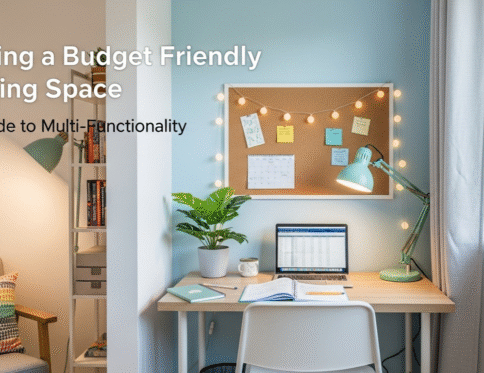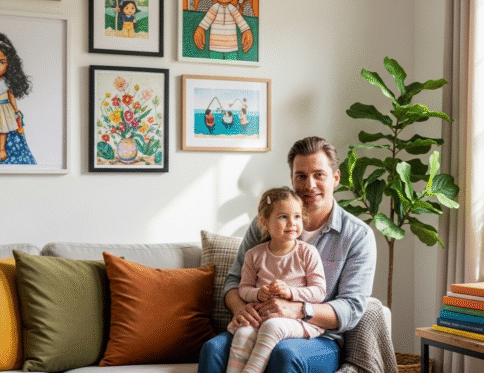As a parent, your child’s safety is the highest priority. You’ve baby-proofed the outlets and locked the cabinets, but a hidden danger often lurks in plain sight: your furniture. Knowing how to spot unsafe furniture is a critical skill, whether you’re buying new, accepting a hand-me-down, or re-evaluating your own home.
This comprehensive parent’s checklist for furniture safety is designed to give you peace of mind. We’ll go beyond the obvious to uncover the stability issues, hidden hazards, and material risks that can make everyday items a threat to your little one.
1. The Stability Check: Conquering Furniture Tipping Hazards
The single most critical test for any piece of furniture is for stability. According to the U.S. Consumer Product Safety Commission (CPSC), tip-over incidents are a leading cause of childhood injuries.
- The Wobble Test: Place the furniture on a hard, level surface. Does it wobble or seem unsteady? If so, it’s an immediate red flag.
- The Pull-Out Test: Open all the drawers on a dresser or cabinet at the same time. Does the unit start to lean forward? A well-designed piece should remain stable.
- The Climb Test: Apply gentle, downward pressure on the edge of an open drawer or a low shelf to simulate the weight of a curious toddler. If it tilts, it is not safe without being anchored.
- The Anchor Imperative: Any tall or heavy furniture (dressers, bookshelves, TV stands) must be anchored to the wall. This is non-negotiable for creating child-safe furniture. Use anti-tip kits and ensure they are installed correctly into a stud.
[Include an original, high-quality image here of an anti-tip strap properly installed on the back of a dresser, with clear alt text: “An anti-tip strap securely anchoring a white dresser to a wall to prevent furniture tipping hazards.”]
2. The Crib Inspection: Ensuring a Safe Sleep Space
A crib is where your baby will spend the most unsupervised time, so it demands the most scrutiny. Modern crib safety standards are rigorous for a reason.
- Bar Spacing: The space between crib slats must be no more than 2-3/8 inches (6 centimeters) apart to prevent a baby’s body from fitting through. Use a soda can for a quick check; if it fits, the slats are too wide.
- Mattress Fit: The mattress should be firm and fit snugly inside the crib. There should be no more than two fingers of space between the side of the mattress and the crib frame.
- Structural Integrity: Check for any loose or missing hardware. The entire structure should feel solid. Avoid drop-side cribs, which are now banned from sale in the U.S. due to safety concerns.
- Corner Posts: Corner posts should be flush with the top of the headboard and footboard, or they should be very tall (over 16 inches). Anything in between can pose a snagging hazard for a child’s clothing.
3. The Surface-Level Sweep: Checking for Finishes and Sharp Edges
Once you’ve confirmed stability, it’s time to inspect the surfaces and construction details.
- Sharp Edges and Corners: Run your hand along all edges and corners. They should be rounded or smooth. Sharp corners on coffee tables, nightstands, and dressers can cause serious injury and should be covered with safety bumpers.
- Splinters and Cracks: Carefully inspect all wooden surfaces for splinters, cracks, or peeling paint. This is especially critical when considering secondhand furniture safety.
- Lead Paint: For any furniture manufactured before 1978, be extremely cautious about the paint. If it’s chipping or you plan to refinish it, consider getting a lead test kit.
4. The Hidden Dangers: Gaps, Entrapment, and Small Parts
Some of the most serious risks aren’t immediately obvious.
- Entrapment Hazards: Look for any gaps or openings between 3.5 and 9 inches where a child’s head could become trapped. This can occur in bunk beds, toy chests, and other novelty furniture items.
- Toy Chest Lids: A toy chest lid should have spring-loaded lid supports that prevent it from slamming shut. It should also have ventilation holes in case a child climbs inside.
- Small Parts: Check for any decorative knobs, caps, or other small pieces that could come loose and become a choking hazard. Give them a firm tug to ensure they are secure.
[Include a short, original video demonstrating how to test a toy chest lid for a slow, safe close, with alt text: “A video showing a toy chest lid staying open on its own and closing slowly, demonstrating proper safety hinges to make it child-safe furniture.”]
5. The Material World: Are There Toxic Materials in Furniture?
Beyond the physical structure, the materials used in your furniture matter.
- VOCs and Formaldehyde: New furniture, especially items made from pressed wood or particleboard, can release Volatile Organic Compounds (VOCs), including formaldehyde. This “new furniture smell” can irritate airways. Look for furniture with a Greenguard Gold or other low-VOC certification. If that’s not possible, allow new furniture to air out in a well-ventilated garage or room for several days before use.
- Phthalates and Flame Retardants: While less common now, older foam products or plastics could contain harmful chemicals. When in doubt, checking the manufacturer’s material disclosures is a good practice.
Being proactive about securing furniture to walls and thoroughly inspecting every piece that enters your home is one of the most important things you can do to create a safe environment. This checklist will help you learn how to spot unsafe furniture and give your child a secure space to grow and explore.
Disclaimer: This article is for informational purposes only and does not constitute professional safety advice. Always consult with a certified childproofing expert for specific recommendations for your home and follow all manufacturer instructions when installing furniture and safety devices.






